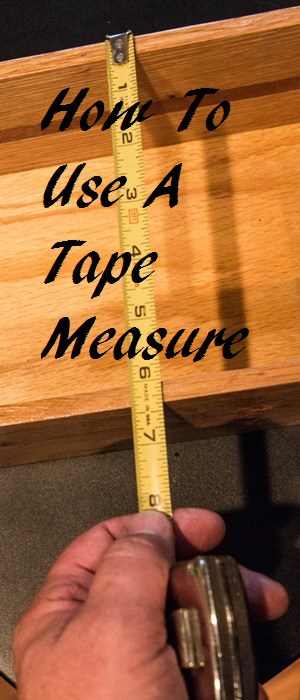
For a lot of people, knowing how to use a tape measure correctly seems like a no brainer, until you want to get an accurate measurement. Then you have a lot of questions that need answered, like: What are all the little marks for? Why is the hook loose? How accurate can it really even be?
Types of Tape Measures
Using a tape measure be confusing, but depending on the type, you may get lost just looking at it. So, what kinds of tapes are there?
- SAE or Metric – SAE, – The traditional standard tape broken up by small marks based on fractions of an inch and feet. Metric tape measures are based on meters, centimeters and millimeters.
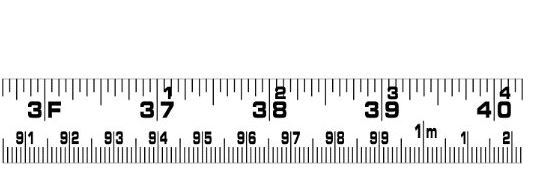

- Engineers tapes – Instead of 1/16″ of an inch, the markings are based on tenths of a foot. Instead of 12 inches, you have 10 divisions. It makes calculations easier engineers.

- Diameter – Yup, wrap this around a pipe and it does the math for you.
- Short Blade/Long Blade – A short blade is the typical tape measure you are used to seeing. A long blade will be 50 feet long or more. It is usually round, with a crank on the side to wind it up. It is used for laying out buildings, property lines and the like.
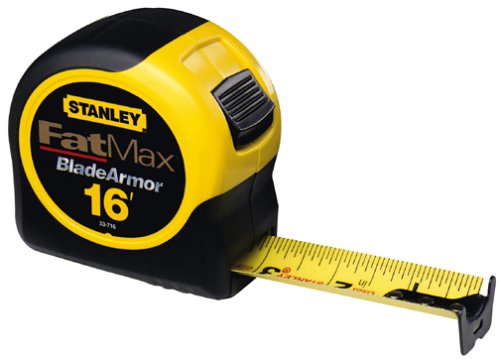

- Fractions – A standard (SAE, or Imperial) tape, can also be marked with fractions and/or decimal values, to make it easier to read.

Accuracy – A standard tape will have lines, breaking down the inches into smaller, defined distances. They can be really coarse at 1/4″, common at 1/8″ or 1/16″, or even very accurate at 1/32″ or 1/64″. When using a tape, remember that it is “accurate” to 1/2 the smallest marking, with practice. So a 1/16″ scale can be read to 1/32″, but no finer.
Features of a Good Tape Measure
Focusing on standard, short blade tape measures, there are a few features to look for:
- Blade width – Blades are sold as narrow as 1/4″, and can be as wide as 1 1/4″. Why? It makes a difference, depending on what you are using it for. A narrow blade bends easily. It’s pretty good for small, bench top projects. It really sucks for taking longer measurements, because the blade will break (fold). A wide blade lets you take long measurements without an assistant. The blade won’t break (fold) for up to 8 feet or more. Narrow bladed tapes fit in your pocket, or purse. Wide blades do clip to your belt, but are heavy and bulky.
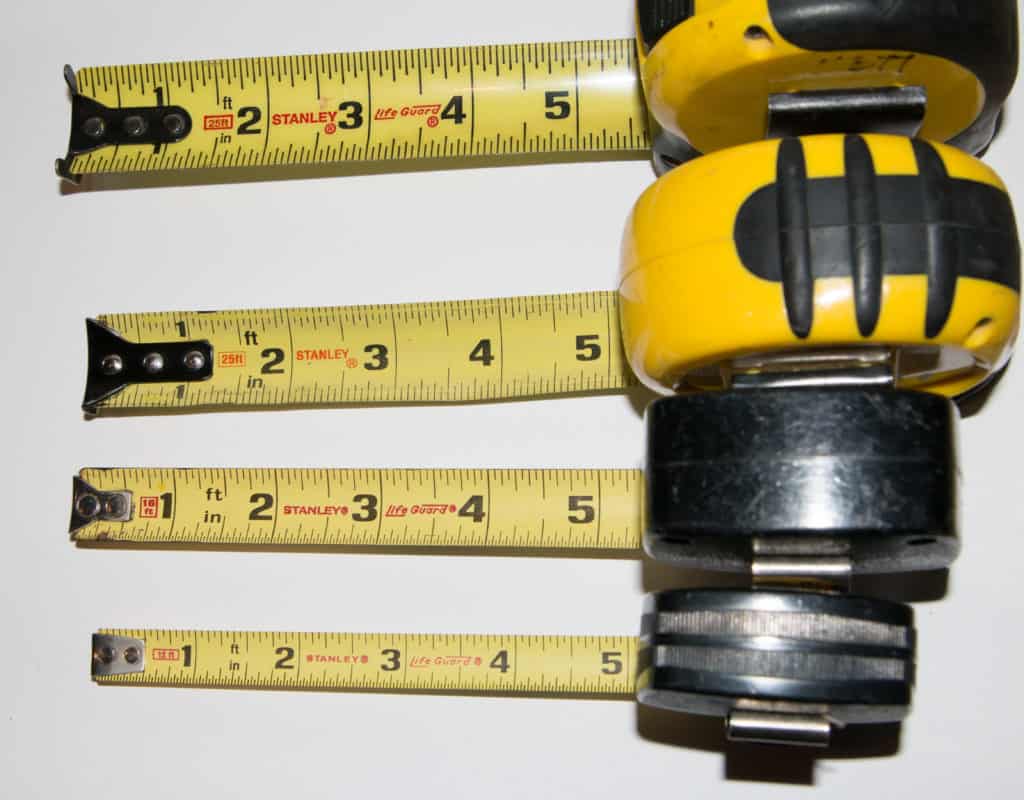
- Blade hook – Yes, the hook should be loose! It is designed to move the thickness of its hook blade. Why? This means I can get an accurate measure of both the outside (hook it on the edge of a board), and the inside of an opening (push the blade against one side). If you bend the hook, or damage the rivets so it can’t move, it will no longer be accurate for precision work.
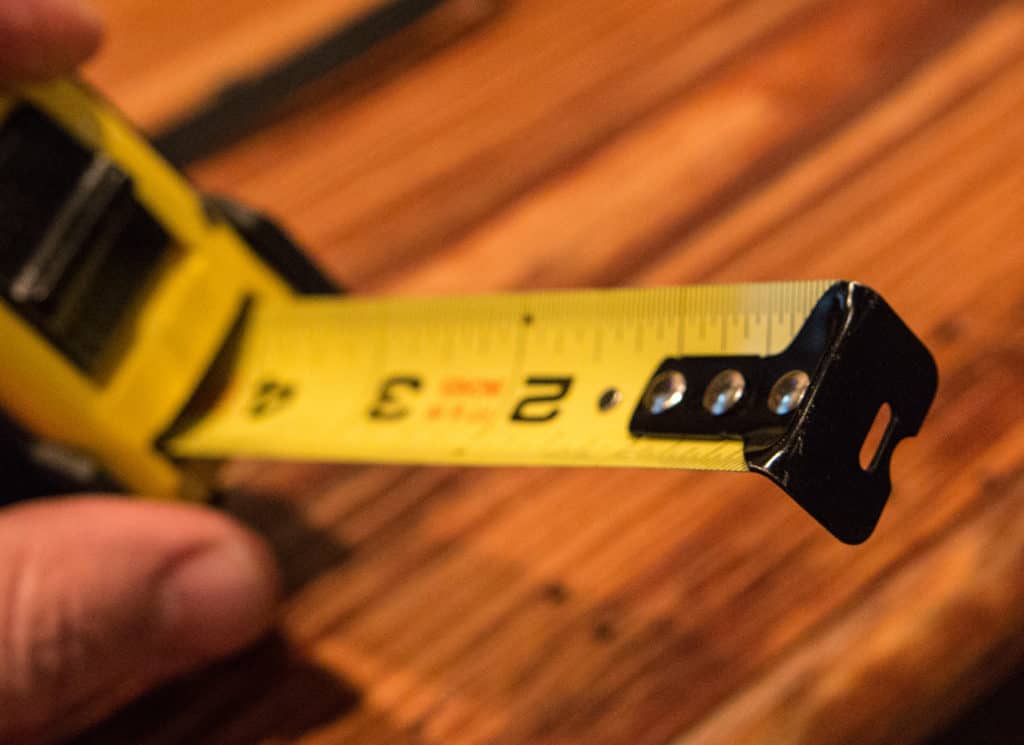
- Nail hook – There is a small slot in the tang, or blade, that is there so you can hook the blade on a nail or screw head, and then pull your take to measure. This is really helpful when measuring a longer distance, without a helper.
- Body length – Many tape measures will have the length of the case marked on them. This is very helpful when measuring inside. For example a window or length of a wall. For example: My 12′ Lufkin case is 2″ long. I would pull the tape from one inside corner and push the body into the other. check the measurement, and add 2″ to it, for an accurate inside length. Much more accurate than bending the tape and guessing.
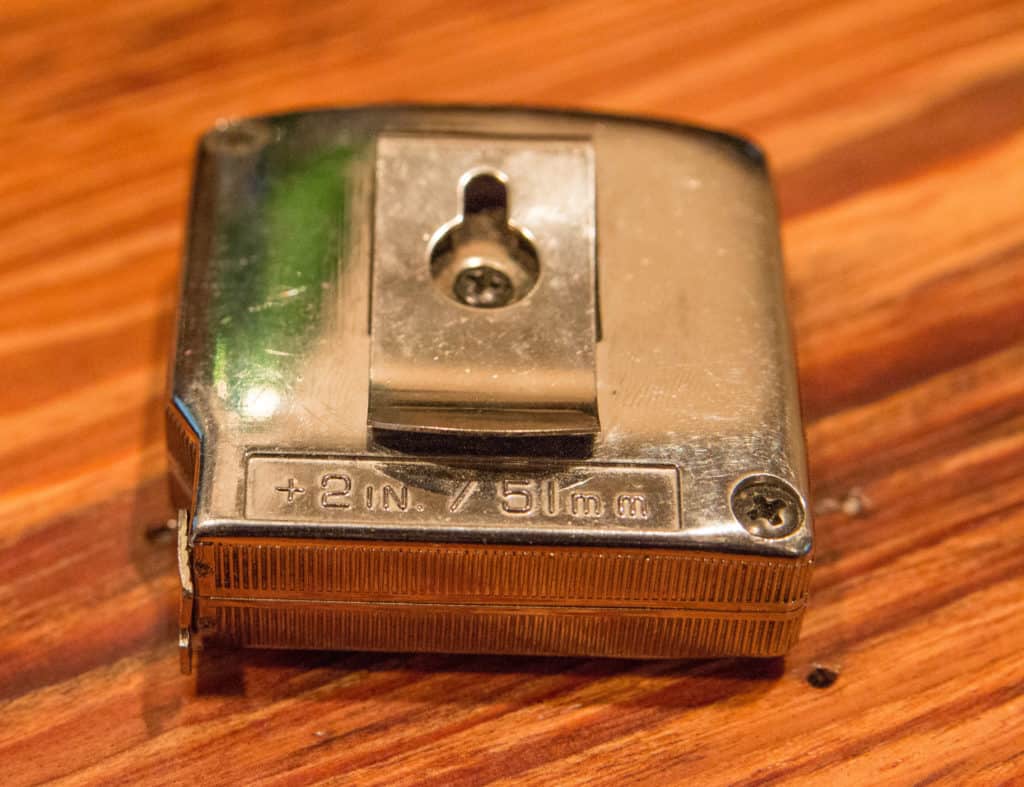
- There a usually special markings every 16″. This is for framing a wall. It allows you to quickly mark off the studs on 16″ centers.

- There is also a black diamond at 19.2″. These are for laying out trusses (5 trusses in 8′). (see above photo)
How to Choose a Tape Measure
I have several tapes of various lengths and blade widths. Some are marked with traditional lines. Some have fractions and decimals. I have metric and a 100′ tape.
Why so many? No good reason, I am just drawn to them like a moth to a flame. It make sense to have a couple, based on the type of work you do. I like a 12′, or 16′, tape with a 1/2″, 3/4″ wide blade, when working on small projects. I use a 25′, or longer, for framing and larger projects. I like a WIDE blade for this as well. I hate it when my tape folds over, just as I’m about to get that measurement. My favorite is the FatMax 16′ tape.
How To Use A Tape Measure
A couple of things to remember when using a tape measure.
- Keep the blade clean. Inspect it for damage, usually in the first 6″ or so. Is the hook damaged? Does it move freely?
- When pulling a measurement, you need to keep the blade running straight and true. How? Remember, the shortest distance you can measure is the most accurate. So swing the tape in a small arc, until you find that point.
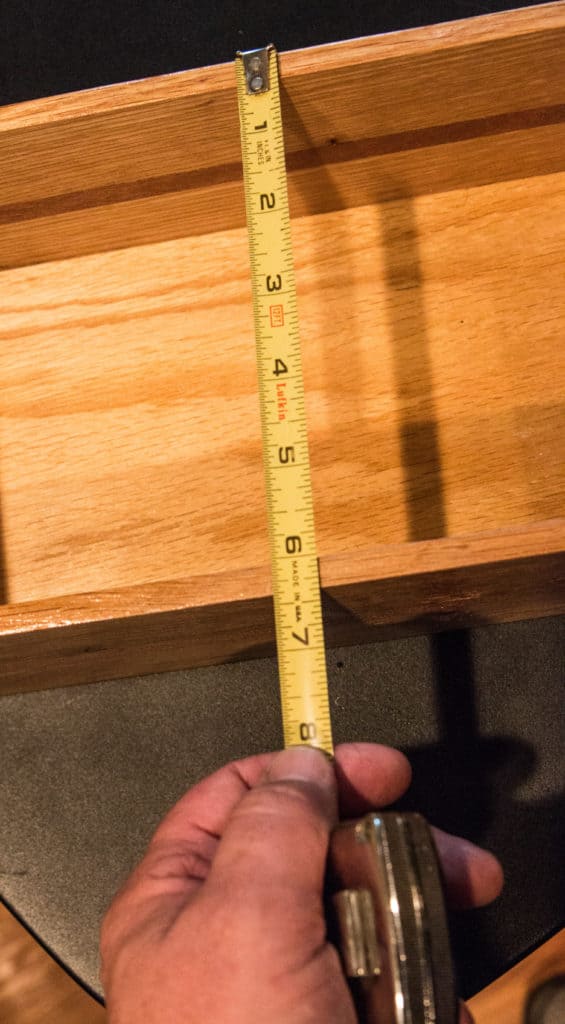
- The same is true for checking an inside dimension.
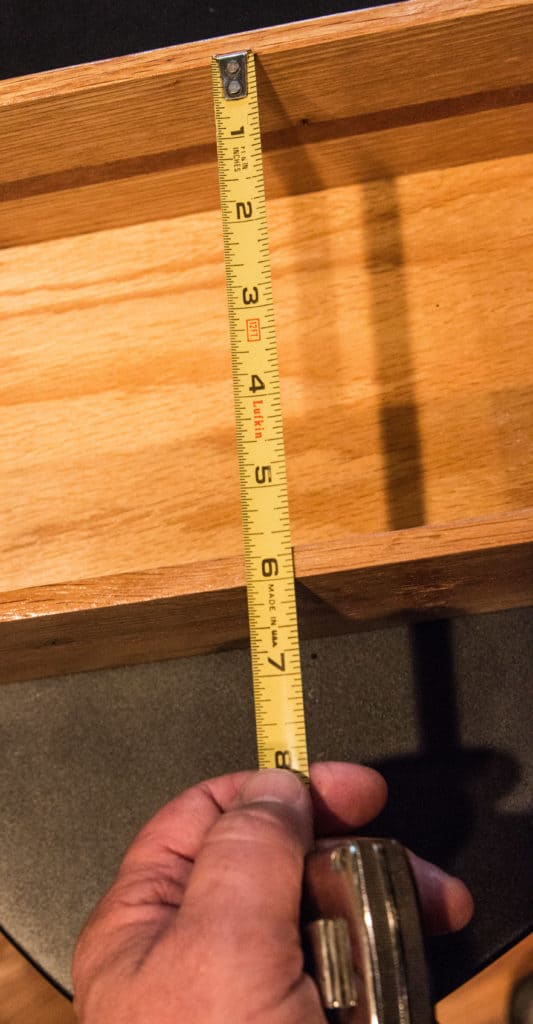
- Make sure you pull the tape tight. Don’t let it sag. This can be a problem on a longer measurement.
- You can put a nail in a board, and using the nail hook, scribe a circle or arc, at a specific distance.
- Always mark with a “V”. Putting the apex (corner) at your desired distance, makes it much easier to know later, which end of the mark is the right one.
Bonus Tape Measure Trick!
Divide a board into equal widths, without any math!
- How many parts do you want?
- Pick a number that is an easy multiple.
- Pull the tape measure at an angle, so the new number is on the other edge.
- Mark the sections by the multiples.
Example: I want 4 even width marked out on a wide board, not sure how wide it is. So, 4×3, I will use 12 on the tape. Lay the tape at an angle, from hook to 12, and mark at 3″, 6″, 9″ and 12″. Now you can use a square to draw your lines!
So there it is. We have covered the basics of tape measures. The types and styles. How they are marked and their features. We’ve described their use, and a couple of pro tips to make your work simpler. Did we miss anything? Are there any other tips that you can add? Comment below and let me know if you have any questions.
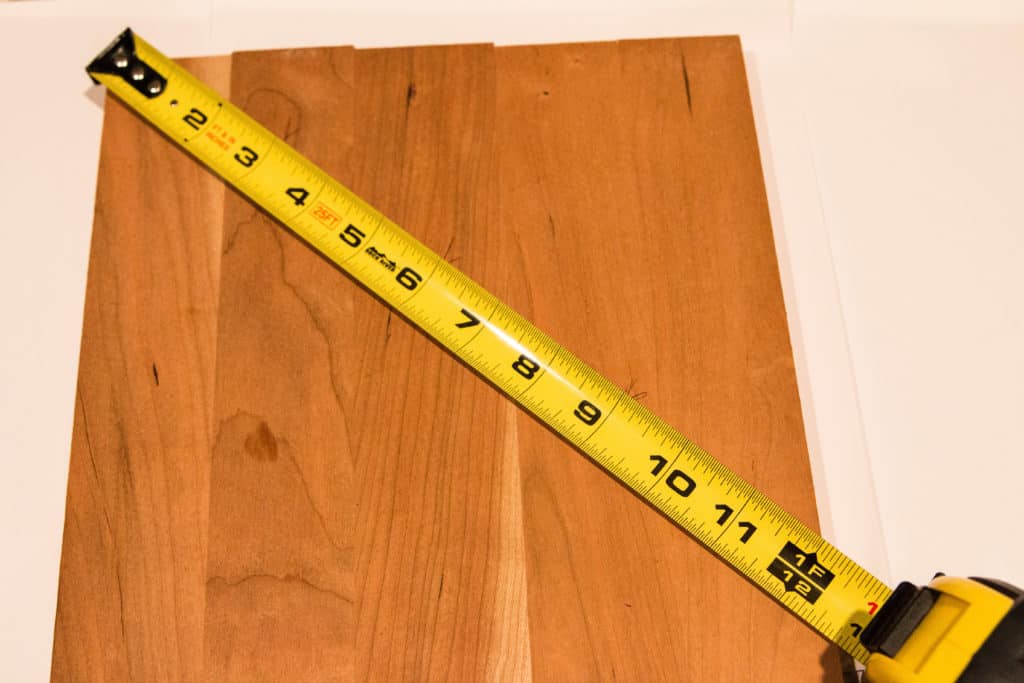

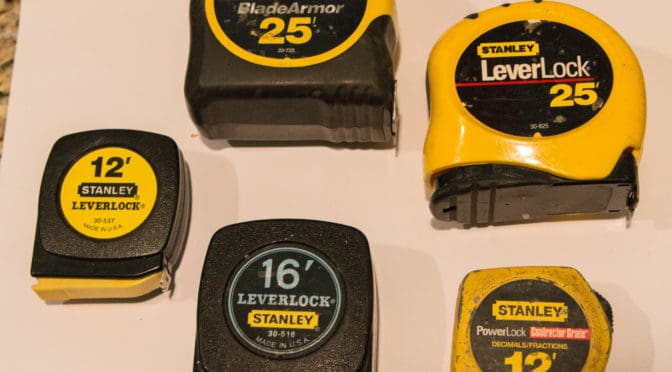

Wow, what an informative article you published here. Real information helps to avoid common mistakes when we use a tape measure. Hopefully the articles will help a beginner.
Thank you so much.